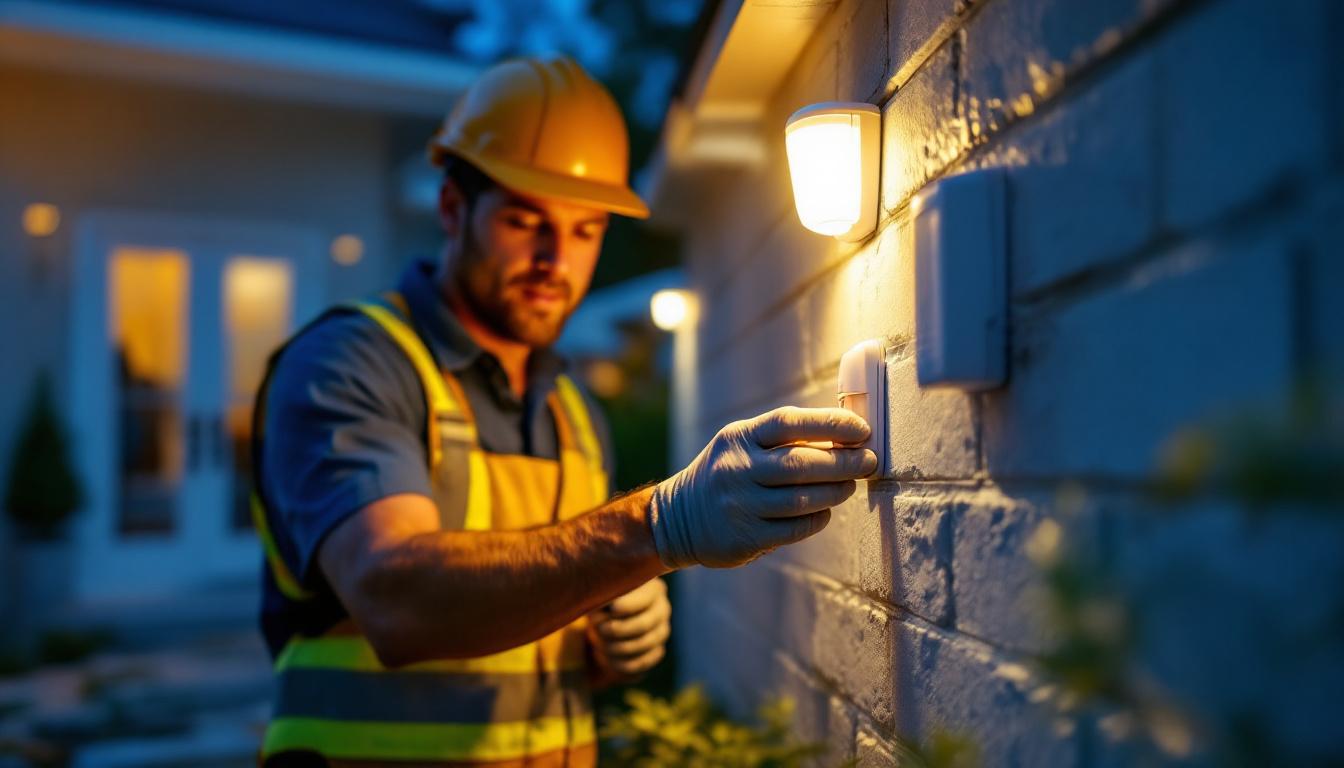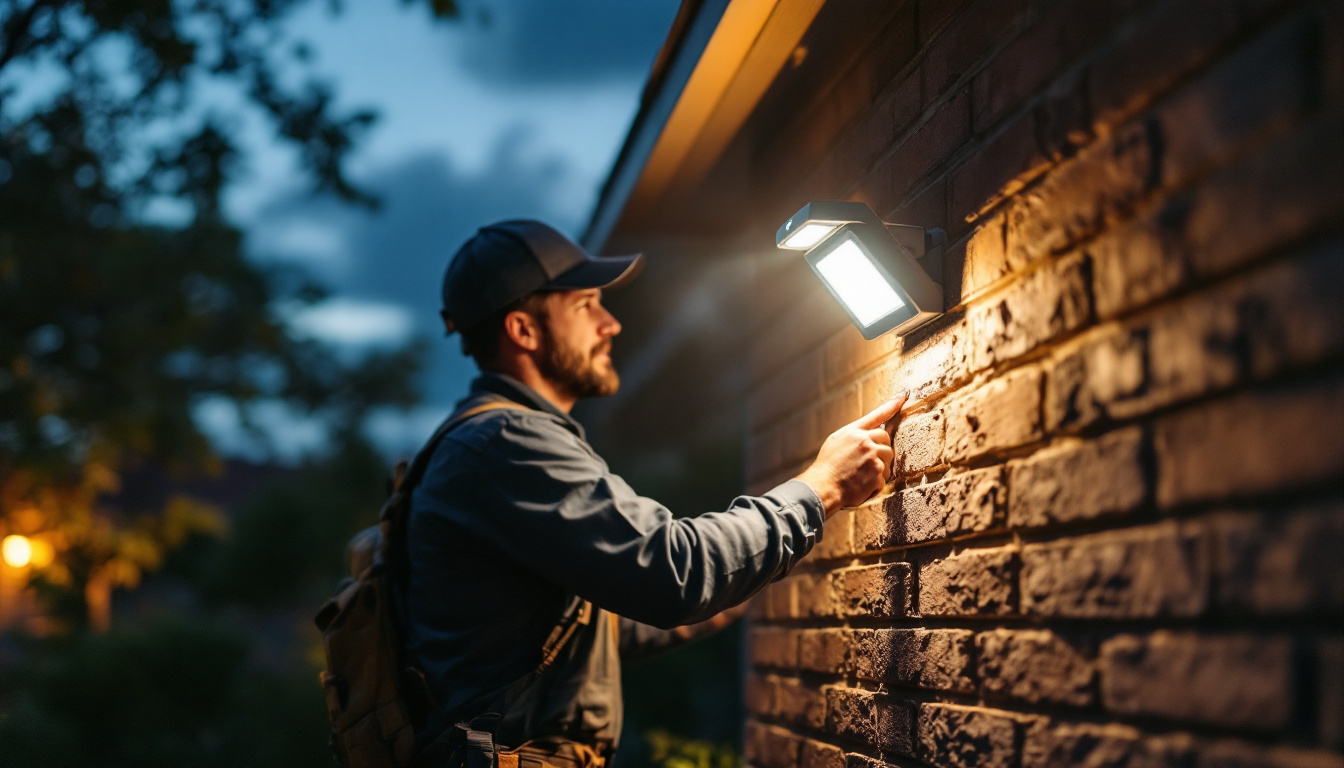
Yard motion sensors have become an essential component in modern outdoor lighting systems. These devices detect movement within a designated area and activate lighting accordingly, offering enhanced security, energy efficiency, and convenience. For lighting contractors, understanding the technical, regulatory, and practical aspects of these sensors is crucial to delivering compliant and effective solutions to clients.
With increasing demand for smart home technologies and energy-conscious installations, motion sensors are no longer optional add-ons but often a requirement in residential and commercial lighting projects. Their ability to reduce unnecessary energy consumption while providing safety benefits makes them a popular choice among homeowners, property managers, and municipalities alike.
Motion sensors contribute significantly to energy savings by ensuring lights are only on when needed. This not only reduces electricity bills but also extends the lifespan of lighting fixtures. Additionally, they enhance security by illuminating areas when movement is detected, deterring potential intruders and increasing visibility for occupants.
For lighting contractors, incorporating motion sensors means balancing functionality with compliance to local codes and standards. Failure to adhere to these requirements can result in project delays, fines, or the need for costly rework, making it imperative to stay informed about evolving regulations. Furthermore, the integration of these sensors into existing systems can be a complex task, requiring a thorough understanding of the technology and its compatibility with various lighting types. This knowledge not only aids in the selection of the right sensors but also ensures that installations are seamless and effective.
Moreover, the versatility of motion sensors extends beyond simple on/off functionality. Many modern sensors come equipped with features such as adjustable sensitivity settings, timers, and even smart connectivity options that allow homeowners to control their outdoor lighting remotely via mobile applications. This added layer of convenience not only enhances user experience but also opens up new opportunities for contractors to offer customized solutions tailored to individual client needs. As technology continues to advance, the potential for integrating motion sensors with other smart home devices—such as security cameras and alarms—will further elevate their importance in outdoor lighting design, making them a pivotal element in the future of residential and commercial properties.
Compliance is a critical aspect when installing yard motion sensors. Various codes and standards govern outdoor lighting installations, including motion sensor requirements, to ensure safety, energy efficiency, and environmental protection.
Many regions have adopted energy codes that mandate or strongly encourage the use of motion sensors in outdoor lighting. For example, standards such as the International Energy Conservation Code (IECC) and ASHRAE 90.1 include provisions for automatic controls in outdoor lighting systems.
These codes typically require that outdoor lighting fixtures be equipped with motion sensors or other automatic controls to reduce energy consumption during periods of inactivity. Lighting contractors must be familiar with the specific requirements in their jurisdiction, as these can vary widely depending on local amendments and enforcement policies. Moreover, staying updated with evolving energy codes is crucial, as municipalities frequently revise these regulations to promote sustainability and technological advancements in energy efficiency.
Another important compliance factor involves minimizing light pollution. Dark Sky initiatives and local ordinances often regulate the intensity, direction, and timing of outdoor lighting to protect nocturnal environments and reduce glare.
Motion sensors play a pivotal role in these efforts by limiting light emissions to periods when activity is detected, thereby reducing unnecessary illumination. Contractors should ensure that sensor settings and fixture placements align with these environmental guidelines to avoid penalties and support sustainable practices. Additionally, understanding the ecological impact of lighting choices can enhance community relations, as many neighborhoods are increasingly advocating for wildlife-friendly lighting solutions that preserve the natural night sky.
Beyond energy and environmental codes, safety standards such as the National Electrical Code (NEC) influence how motion sensors are installed and wired. Proper grounding, circuit protection, and compatibility with lighting controls are essential to prevent electrical hazards.
Additionally, accessibility standards may require that outdoor lighting systems provide sufficient illumination for safe navigation, particularly in public or commercial spaces. Motion sensors must be configured to meet these illumination levels without compromising energy efficiency. It is also vital to consider the placement of sensors to ensure they are not obstructed by landscaping or architectural features, which could hinder their effectiveness. By adhering to these safety and accessibility standards, contractors not only comply with regulations but also enhance the overall user experience, ensuring that all individuals, regardless of mobility, can navigate outdoor spaces safely and comfortably.
Successful installation of yard motion sensors depends on understanding their technical specifications and how they interact with lighting fixtures and control systems.
Motion sensors come in various types, including passive infrared (PIR), microwave, ultrasonic, and dual-technology sensors. Each type has unique detection capabilities and limitations:
Contractors should select sensors based on the specific site conditions, desired sensitivity, and potential sources of interference. For instance, in areas with high foot traffic, a dual-technology sensor may be preferable to minimize the likelihood of false alarms triggered by small animals or environmental factors. Understanding the nuances of each technology allows contractors to tailor their solutions effectively to meet the needs of their clients.
Proper placement and configuration of motion sensors are vital to optimize performance and compliance. Sensors should be installed at appropriate heights and angles to maximize detection zones while minimizing false activations caused by animals, vehicles, or environmental factors like wind-blown debris.
Additionally, adjusting settings such as time delay, sensitivity, and ambient light thresholds allows customization to client needs and local regulations. For example, setting a shorter time delay can enhance security, while a longer delay might improve energy savings. It is also essential to consider the layout of the area being monitored; ensuring that the sensor’s field of view is unobstructed and covers critical access points can significantly enhance security measures.
Modern yard motion sensors often integrate with advanced lighting controls, including dimmers, timers, and smart home platforms. This integration enables features such as gradual dimming, remote control, and adaptive lighting schedules. The ability to program lighting to respond to specific times of day or occupancy patterns not only enhances convenience but can also lead to significant energy savings over time.
Lighting contractors should be proficient in configuring these systems to ensure seamless operation and compliance with energy codes. Compatibility with existing infrastructure and ease of maintenance are also important considerations during system design. Furthermore, as smart home technology continues to evolve, staying updated on the latest advancements in wireless communication protocols, such as Zigbee or Z-Wave, can provide clients with enhanced functionality and future-proof their installations. Understanding how to integrate these technologies can set contractors apart in a competitive market, allowing for more sophisticated and user-friendly lighting solutions.
While yard motion sensors offer many benefits, contractors may encounter challenges related to compliance and installation.
False triggers can lead to unnecessary energy use and client dissatisfaction. Common causes include sensor misalignment, environmental factors, and inappropriate sensor type selection.
To mitigate these issues, contractors should conduct thorough site assessments, choose suitable sensors, and perform on-site testing and calibration. Educating clients on proper sensor use and maintenance can also reduce complaints and service calls.
Clients often desire high security levels, which can conflict with energy-saving goals. Overly sensitive sensors may keep lights on too long, while insufficient sensitivity can leave areas unlit.
Contractors must find a balance by customizing sensor settings and possibly combining motion sensors with other controls like photocells or timers. Clear communication with clients about these trade-offs ensures expectations are managed effectively.
Regulations and technologies related to outdoor lighting and motion sensors are continually evolving. Staying current requires ongoing education, participation in industry groups, and monitoring updates from code authorities.
Investing in training and leveraging manufacturer resources can help contractors maintain compliance and offer cutting-edge solutions that meet client demands and regulatory requirements.
Yard motion sensors are a vital element in modern outdoor lighting, offering benefits in energy efficiency, security, and environmental stewardship. For lighting contractors, understanding the regulatory landscape, technical specifications, and practical installation considerations is essential to delivering compliant, high-quality installations.
By staying informed about codes and standards, selecting appropriate sensor technologies, and applying best practices in installation and configuration, contractors can enhance client satisfaction and support sustainable lighting solutions. Ultimately, this expertise positions contractors as trusted professionals in an increasingly competitive and regulation-driven market.
Ready to elevate your lighting projects with the best yard motion sensors on the market? Look no further than LumenWholesale, where we provide contractors with exceptional, spec-grade lighting products at unbeatable wholesale prices. Say goodbye to local distributor markups and hello to our extensive selection that meets the highest industry standards for reliability and performance. With LumenWholesale, bulk buying is a breeze, and with free shipping, you’re guaranteed premium lighting solutions at the best value — all without hidden fees or compromises. Enhance your outdoor lighting installations with the quality, affordability, and convenience that only LumenWholesale can offer. Wholesale Lighting at the Best Value.

Discover how strategic hanging dining room lighting designs can boost your success as a lighting contractor.

Discover the pitfalls lighting contractors often face with solar-powered outdoor LED lights.

Discover how smart lighting contractors are revolutionizing greenhouse cultivation with innovative plastic panel greenhouses and LED grow lights.

Discover how exterior flood lights with motion sensors are revolutionizing the work of lighting contractors by enhancing efficiency and security.